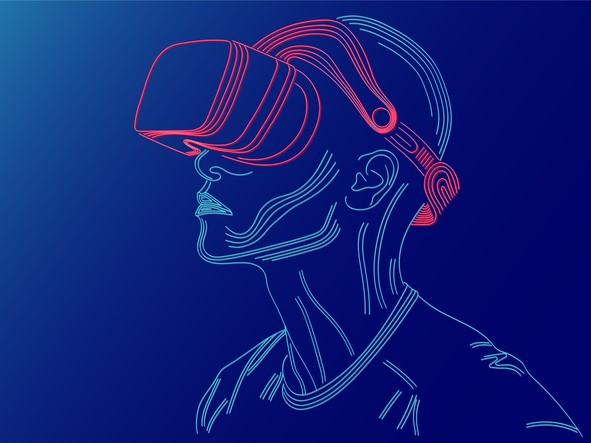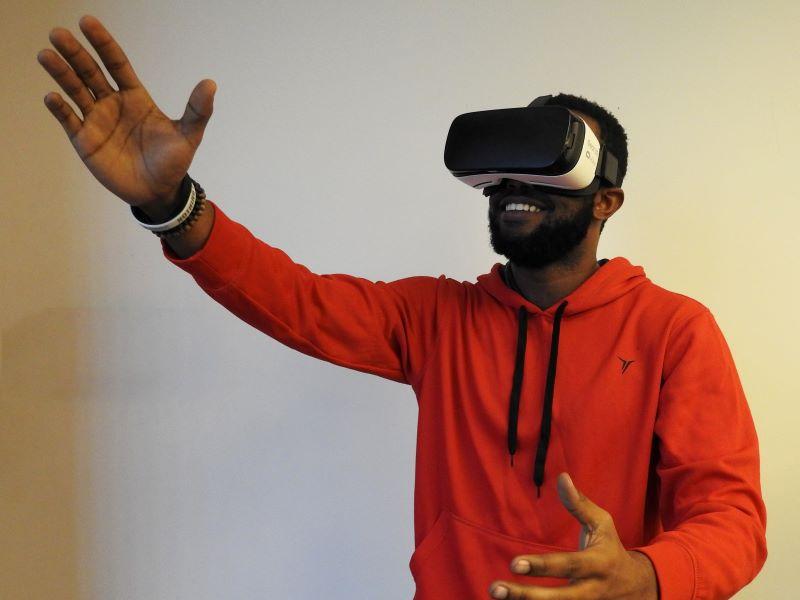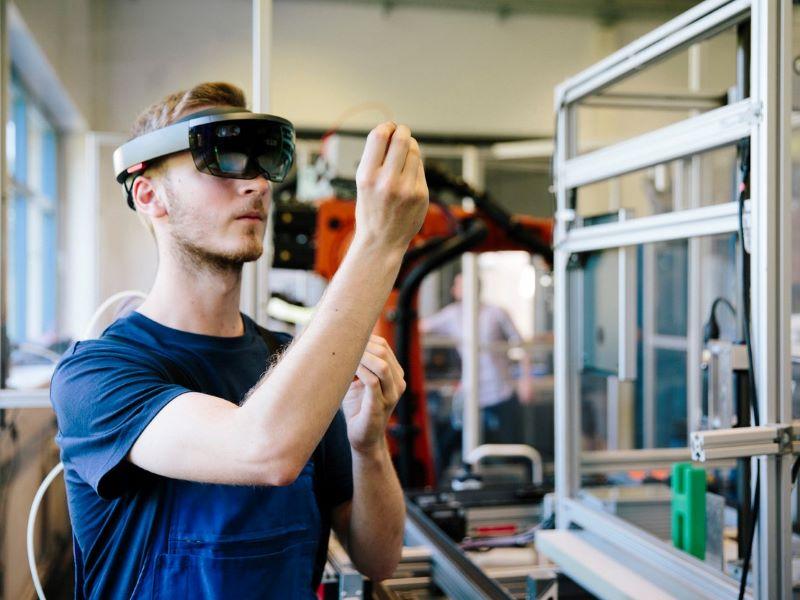Virtual reality (VR) has been around for quite some time, riding alternating waves of popularity and failure. Wild predictions about the future of the technology have always abounded, including Goldman Sachs saying in 2016 that the virtual/augmented reality market would reach $182 billion in revenue by 2025 and replace television.
Similarly, in education, VR has also been promoted as a gleaming utopian vision: attentive groups of students wearing the latest headsets learning in flawless, sophisticated and simultaneous simulations, at one with technology. Sometimes they’re not even in a classroom, because their magnificent virtual set-ups don’t require them to leave the house. The reality is something quite different – few institutions can afford this vision, and even for the lucky few that can, they are of virtually no use to distance education teachers and students. For most educators, frankly, the technology may as well not exist. That is a shame, because educators should feel empowered and enabled to use mixed, augmented and virtual reality to promote learning, no matter where they are and what their budget.
- It may be time to rethink the ‘edtech adoption curve’
- Chasing unicorns: can universities shape the edtech space to their advantage?
- The metaverse is much more than a virtual copy of your campus
Now, before the haters come for me (and there is most certainly a subset of educators who cling stubbornly to only this gleaming vision), my PhD was about virtual reality, I’ve conducted VR experiments with students and vendors around the world (and continue to do so), and I’ve seen some behind-the-scenes demonstrations of the technology that truly knocked my socks off. I am both genuinely excited about the future of the technology and acutely aware of how it is miles away from that vision at present.
Some will claim showing a small amount of off-the-shelf VR experiences (that do nothing to address specific pedagogical problems) as “doing VR in schools” and call it a day. This should not be the case. It may be that there’s usefulness in showing students what the tech looks like at a basic level; but because of its generic nature, it can only serve as a technological taster, not the full meal that students require to make it work as a genuine part of the curriculum. Getting virtual (and augmented) reality right at a sophisticated level requires a hefty mix of hardware, pricey developers, rock-solid internet and solutions to problems that are suited to the technology and the pedagogy.
So what’s the solution? Am I saying we just put the tech on ice until it somehow reappears, perfectly formed, in the future? Not at all. But I am asking educators to juggle their justifiably heightened expectations of this technology’s future with more modest applications in the present. If we step away from utopia, what can all educators use that is free (or as close to it as possible) and flexible?
From the VR point of view, it is remarkably easy to create a high-quality, 360-degree image – known as a “photosphere”. This is a static image of one area, from every angle, using tools such as Google Street View, on the phones we already have in our pockets. We may think of Street View as a tool only for stalking our friends’ houses or checking out what Disneyland looks like from the outside, but it has a simple-yet-sophisticated image creation side, too. Once we have a few of these photospheres, we can embed them in various free online tools to create a narrative and overlay with audio (which we can also record for free on our phones), images and text.
To put this into an educational perspective: an educator in an upcoming project of mine in Asia identified that creativity is not taught or valued as much as she would like in her country, so she is using the above tech to have her students show us what a day in their home life looks like. The students use their phones to create photospheres and are then guided to create their own narrative using audio and text, and then share these with their colleagues – and, in fact, all over the world. End users can view these photospheres in a browser by moving their mouse, or on a mobile phone or tablet by waving their device around, and it will reveal all 360 degrees of these creations. A simple solution for sure, but all free, using tools they already have. There are also extremely cheap VR viewers that can be best compared to opera glasses, which can be slipped over the front of mobile phones to create a simple but perfectly acceptable form of genuine VR immersion.
Similar solutions are being developed as part of projects on medical education in Canada (helping simulate stressful environments such as emergency rooms or ambulances for students in advance of actually being in them), hotel rooms in Hong Kong (demonstrating to cleaners what is to be cleaned and how long it should take) and ancient European tourist sites that are crying out for more background story to immerse students in history. We are also exploring augmented reality options where educators place virtual objects in real-world locations and students view them through their phones in multiple innovative ways, including real-world “treasure hunts” where students are led from clue to clue, being surreptitiously educated on the landmarks and history surrounding them along the way. All free or extremely close to it.
These solutions are simple and, admittedly, so are the outcomes. Additionally, the free apps and software can be a little inflexible or limited. But when you consider that many educators and students (remote students in particular) are excluded from higher-end solutions, it’s worth taking a step back. So, let’s drop the pretensions and embrace a crafty use of free technology to enchant students and provide a solution that might just be the right fit for right now. It’s time to think small.
Malcolm Burt is a researcher, lecturer and multimedia production team leader at Central Queensland University, Australia.
If you found this interesting and want advice and insight from academics and university staff delivered direct to your inbox each week, sign up for the THECampus newsletter.



comment